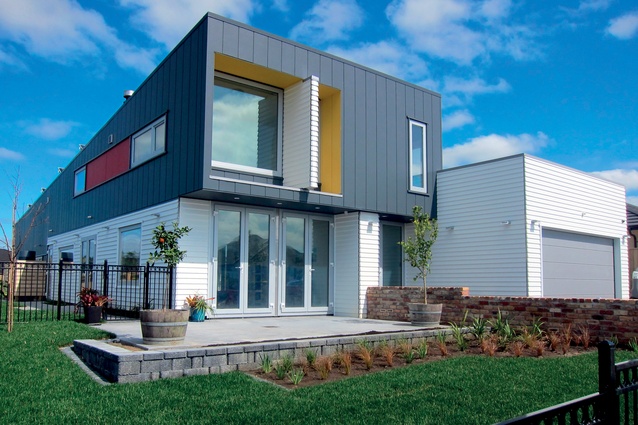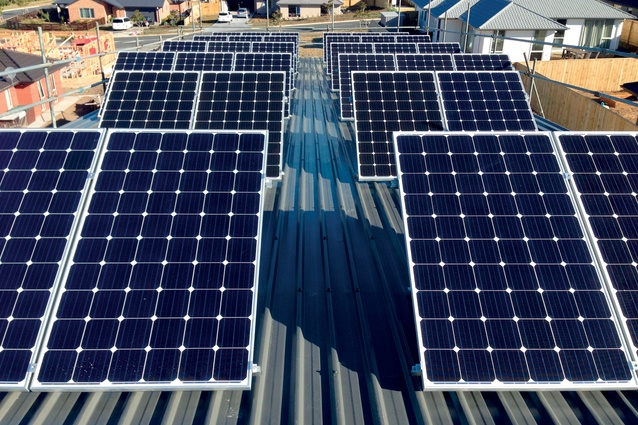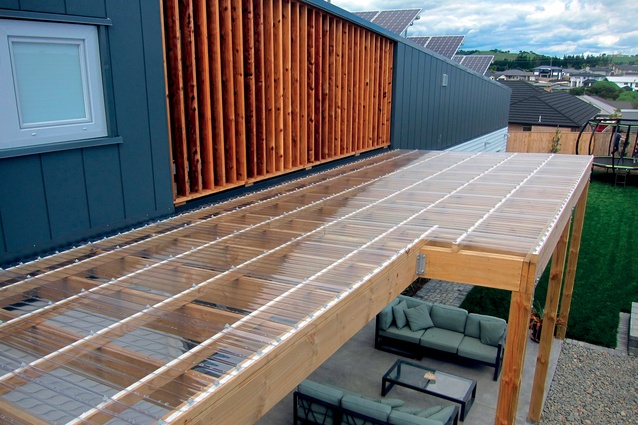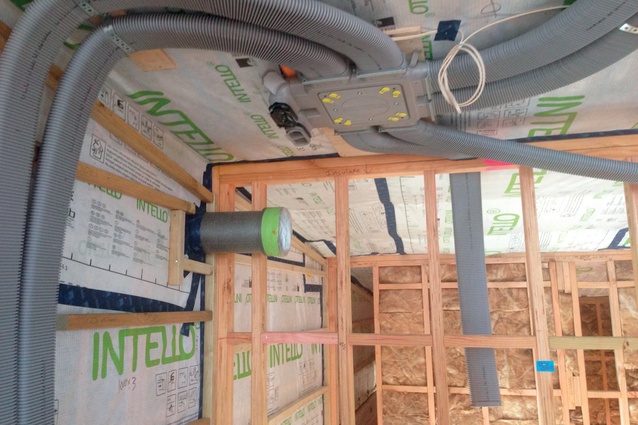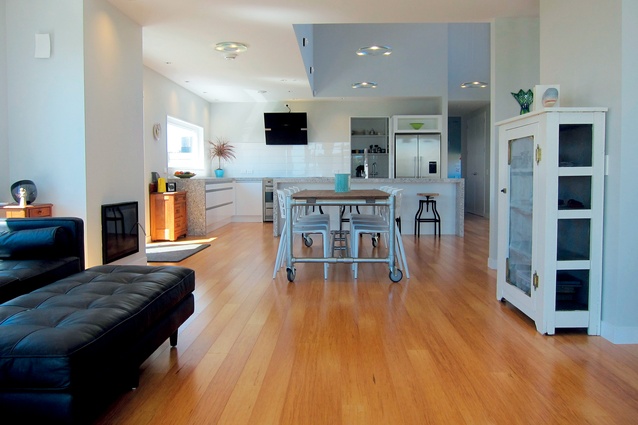In an ideal world
Ideal House is a high-performance home that has been built in Beachlands, Auckland, to showcase the latest in sustainable design and materials. Houses talks to owners Murray and Lee Ann Durbin about their experiences building and living in the home.
Not only do you live in the home with your two children, you also hold regular open days for the trade and general public. Why do you feel the need to do this?
Right from the start, the intention of the project was always to allow people to experience what a home of this standard feels like in terms of comfort, air-quality, and quietness; the best way to do that is to give them a real-life experience. We have had some great open days – our busiest saw more than 100 groups come through – and there’s always a great mix of interested parties, ranging from families about to start building, to architects, specifiers, engineers and builders. We get fantastic feedback, and I believe everyone that has been through the home takes away something of value.
So what is it about the Ideal House that makes it different?
Firstly, we wanted to build a home that would be certified under the international Passivhaus standard. Not to be confused with passive solar design, Passivhaus is an accreditation that requires strict design- build processes and auditing. There are only a handful of certified passive houses in New Zealand, however there is a strong movement to support this type of building, lead by the Passive House Institute of New Zealand).

The Passive House movement began in the 1980s and to date, tens of thousands of these homes have been built worldwide. The standard is now even being applied to buildings such as schools and hospitals. Low energy consumption lies at the heart of the Passivhaus standard, and adherence to this is achieved through incorporating the following facets into the project: extremely high levels of insulation; exceptionally high-performing windows; an airtight building envelope; mechanical heat recovery ventilation; and, careful design, which minimises thermal bridging.
In addition to Passivhaus certification, we incorporated the Homestar Rating Tool at the design phase. This tool goes beyond just energy efficiency and performance, and incorporates a wide range of other sustainable aspects from native plantings to accessibility, which took in the holistic approach we were wanting to incorporate into the project.
Why did you feel the need to also go with the Homestar programme?
We felt the Homestar Rating Tool allowed us to consider a wide range of aspects that Passivhaus didn’t touch on; and it made us focus on areas such as sustainable material sourcing, our permeable site coverage and native plantings, all of which have contributed to ensuring that the house sits as lightly on the land as possible.
The house achieved an 8 Homestar rating; you must be thrilled with the result?
We could have scored higher by making some design changes, but we loved the floor plan and you get to the point where you have to draw the line, otherwise you could conceivably tinker for ever.
What about sourcing products locally?
With the exception of the uPVC tripled-glazed windows, which were imported from Europe, sourcing materials locally was really simple. We chose Firth enviropavers for the driveway and paths to reduce peak flow during heavy rain; Earthwool glasswool insulation has a GreenTag Level A rating, which means it can be used in Homestar and Greenstar projects; a Zehnder balanced-ventilation system was couple with a wide range of membranes, wraps and tapes from Pro Clima to ensure the home passed the Passivhaus airtightness test. Lastly, Philips LED lights were chosen both for energy performance and life expectancy.
So how have these products contributed to the energy efficiency of the home?
During the design phase consulting engineers eZED worked in conjunction with the architects, S3 Architects, modelling how the design and product choices would affect the energy outcomes. What they found was that our energy demand was reduced by around 80 per cent, compared to a home designed to the current building code.
Given that these facets are in place throughout the lifecycle of the house, it was an easy decision to then add renewables. Thirty-two photovoltaic panels were installed, which at 8kW allows the home to produce around twice what it consumes. The excess power is fed into the national grid. Additionally, two 25,000-litre water tanks, orchard and vege gardens make home very self-sufficient.
You mentioned architects, how has the architecture contributed to the liveability of the house?
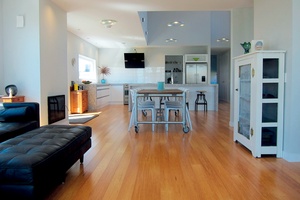
The form of the home was kept simple, which helped significantly towards the details required and building processes on site. The roof was lifted to allow very high stud heights, whilst keeping the total size of the slab and roof the same.
We are rapt with the way the home feels on the inside. The high stud and over-height lofted area in the dining and kitchen, along with the large amounts of glazing, bamboo flooring throughout and neutral colour scheme, means we have a light and airy home – quite different to dark, damp and mouldy homes we’ve lived in previously. Knowing our kids are growing up in a healthy environment means a lot to us.
What about build cost?
A conventional two-storey home in this area costs around $2500 per square metre. Excluding landscaping, our house was built for just under $3000 per square metre, so around 20 per cent more. Simple design details such as a double-skin timber wall, I-Beam skillion roof and a floating insulated floor significantly improved the performance of the home without adding a great deal of extra cost.
Now that it’s finished, has the house lived up to your expectations?
We’ve been living in the home for around nine months now. The indoor air-quality is superb and acoustically we’re completely isolated from the world outside, although we need to add some acoustic treatments for internal noise due to all the hard surfaces. The home has maintained a constant 20-23 degrees with no additional heating sources being required during the colder months.
Many people think that you can’t open up a home like this to the outside world and we love proving them wrong. We have a number of large French doors, which give us the traditional Kiwi indoor-outdoor flow and connection to our great outdoor area, but when it starts getting chilly in the evening we can close these up and maintain a comfortable environment through the night. I don’t think we could ever move into a home built to standard construction methods again.

